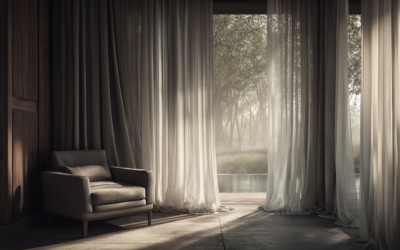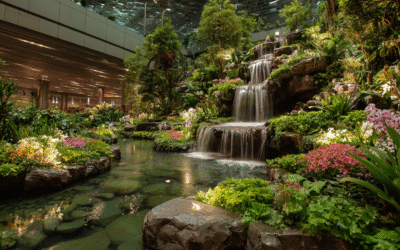TL;DR – Summary for Fast Readers
- Modern retail and hospitality are over-invested in curated experiences that feel emotionally hollow.
- Experience design has shifted from atmosphere to control, replacing discovery with orchestration.
- Three dominant archetypes of over-design are emerging: captive, mirrored, and frictionless.
- The root problem isn’t design itself – it’s the strategic fear of unpredictability and meaning-making.
- Authentic presence in retail requires emotional permission, not just polish.
- The future of experience is about allowing emergence, not managing perception.
The Scene We’ve All Seen
You can smell it before you see it: warm leather, curated lighting, the familiar trace of sandalwood. Somewhere, a whisky tasting station sits under haloed light. You’re in another luxury retail corridor inside another international airport.
It’s all flawlessly executed.
And somehow, it doesn’t land.
You don’t notice what’s wrong – you just don’t feel much at all.
That’s the paradox.
Retail is spending more than ever on creating “experiences,” but fewer people are genuinely affected by them.
Experience Has Become Simulation
Across airports, resort precincts, luxury stores, and concept hotels, the strategy is now sensory immersion.
Every element – soundscape, scent, tone of voice, path – is engineered to produce a specific state.
But instead of presence, what emerges is performance.
Not connection, but choreography.
Experience design has become less about inviting meaning, and more about directing perception.
The Three Archetypes of Over-Design
From my work across airport retail, luxury hospitality, and food precincts, I’ve seen the same experience design failures repeat across sectors. They fall into three familiar patterns:
- The Captive Experience
These are spaces where you can’t escape the narrative: forced flows through retail corridors, mandatory interactive zones, single-direction “immersion.”
It’s attention held hostage, not attention freely given.
- The Mirrored Experience
Ultra-personalised screens, curated displays based on purchase history, interactive mirrors telling you what looks good.
This is retail that reflects you back to yourself – until you can no longer discover anything new.
- The Frictionless Fantasy
Luxury has come to mean: no decisions, no pauses, no friction.
But it’s often in friction – hesitation, uncertainty, conversation – that emotion and memory are formed.
Seamless can become soulless.
Why Brands Keep Doubling Down
This isn’t a failure of execution. It’s a failure of courage.
Modern experience design is often a compensatory mechanism:
- Compensating for a decline in organic consumer trust
- Compensating for reduced physical dwell time
- Compensating for the flattening effects of digital interfaces
So the strategy becomes control:
- Control the path
- Control the mood
- Control the meaning
But control rarely creates connection.
What’s missing is space – space for consciousness, for resonance, for agency.
Emotional Permission: The Real Luxury
When a space doesn’t engage us emotionally, we slip into critique.
We stop experiencing and start evaluating.
This shift isn’t unique to analysts or professionals.
It’s what happens when people feel they’re being managed.
To reverse that, brands must design with emotional permission in mind:
- Permission to not engage immediately
- Permission to slow down
- Permission to discover something unexpected
- Permission to feel differently than intended
Without that, you don’t have experience – you have emotional compliance.
From Fix to Framework
If today’s experience design is broken, the fix isn’t more technology, more scent, or more storytelling.
The real work is reframing what experience is for.
| From | To |
|---|---|
| Curating emotion | Allowing encounter |
| Personalising identity | Inviting discovery |
| Managing attention | Trusting awareness |
| Removing friction | Designing meaningful pauses |
Designing for emergence isn’t a risk. It’s a form of respect.
Closing Reflection
You didn’t buy the whisky at the terminal boutique.
But you remember the silence in the gallery five gates down.
No soundtrack. No pitch. Just space. Just stillness.
That wasn’t designed.
It was allowed.
Retail doesn’t need more control.
It needs more courage.



